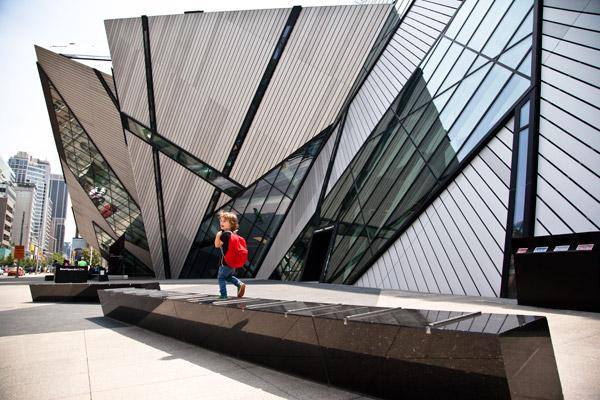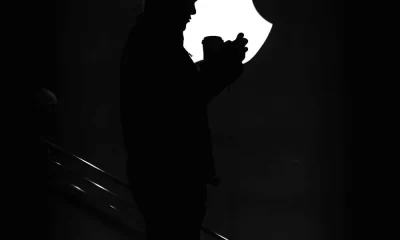Art and Culture
Museums and galleries grapple with digital demands of screen obsessed era

The Royal Ontario Museum. (Facebook photo)
TORONTO—Looking back now, the student developers of a location-based game drawing crowds at the Ontario Science Centre would seem to be prescient geniuses.
Their character-driven game features a cartoon creature that evolves as the player moves from one location to another, collecting information and cards that can only be obtained by physically walking to different parts of the museum.
It’s called BitMorph, and if you think it sounds a little like “Pokemon Go,” the science centre’s director of communication won’t disagree.
“I’ll just note for the record that we had BitMorph out on the floor weeks before ‘Pokemon Go.’ They copied us!” jokes Kevin Von Appen, who says the collaboration with Ryerson University inadvertently tapped into the zeitgeist.
BitMorph is just one of a slew of digital and mobile experiments rolling out at museums and galleries across the country, all of them eager to remain relevant to a screen-obsessed generation.
These days, it’s not unusual to find touchscreens and iPads instead of plasma audio/visual displays, while cellphone tours, mobile apps and enhanced websites are considered must-haves. Previously stuffy galleries have even relaxed photography rules to allow for sharing on social media.
The Royal Ontario Museum is among those examining how to incorporate emerging technologies, including augmented reality and in-house GPS-style (or “Pokemon Go”-style) navigation.
“We have just in the last year hired our first chief information officer and are investing a lot of time and energy around what are the strategies that make the most sense,” says newly installed CEO Josh Basseches, previously with the Peabody Essex Museum in Salem, Mass., and the Harvard Museum of Natural History.
“The ROM, and most museums like us, are still at work on the project of saying: ‘What does it mean to be a 21st-century museum?’ Engaging with the digital world is very much a part of that.”
Visitors can already use augmented reality in the dinosaur gallery to virtually flesh out a Tyrannosaurus rex skeleton with an iPad.
Over at the National Gallery of Canada in Ottawa, exhibition spaces might include costumes and props so visitors can take selfies to post online. During last winter’s Monet exhibition, iPad “painting stations” encouraged visitors to create art inspired by photos of local bridges that were projected onto a wall. It resulted in more than 8,000 paintings, and a selection of them were projected in the space.
It seems clear that audiences—especially younger ones—are increasingly seeking ways to interact with exhibits, as well as curate a personal experience distinct from a docent-led tour or printed guide.
With that in mind, the National Gallery is updating its two-year-old Canadian collection app, and launching a new multimedia guide by 2018, says Gary Goodacre, chief of education and public programs.
“Now there’s technology where if you walk by a painting you can kind of get notifications and the content can be sent to you at a specific time, at a specific location, which is a lot more user-friendly than just having the content on a device that you have to dig through,” Goodacre notes.
“The trick is thinking about what content do we have, what audience is it for? And how do we get it out there?”
While people in their 60s and 70s might be happy with a relatively simple MP3 audio guide, someone in their 20s with their own device would likely prefer an app, he says. Families might want to access treasure hunts and mobile games to entertain a child.
Of course, some fear that digital projects could distract from, or even impair, the ability to enjoy an exhibit for what it is. Then there’s the solitude-craving traditionalist who heads to the museum for soul-searching contemplation, removed from flickering screens and beeping devices.
But Basseches insists there’s no reason all types of visitors can’t enjoy an exhibit side-by-side, in their own way.
If anything, technology can reduce information overload because almost any fact about an exhibit or display can be obtained on any smartphone.
“Inundation with text is an issue and I tend to believe in the right amount of text but not too much,” says Basseches.
“But also it’s the type of media. Words are one way of learning about something that excites you, but (then there are) digital tools where we can create a rich and robust experience that maybe identifies a dozen different exciting areas that research has shown us people want to think about.”
Bandwidth is an issue with any initiative requiring a high-speed Wi-Fi connection, and that’s the hurdle at the Vancouver Art Gallery.
“We’re in an old heritage building and Wi-Fi is actually not available throughout the gallery,” admits public affairs director Johanie Marcoux, noting that plans to break ground on a new gallery would embrace such demands.
But money is an issue, too. Marcoux notes the gallery lent out phones for a Douglas Coupland exhibit in 2014, but that project was later put on hold due to a lack of resources. The lending program was revived for their current Bharti Kher exhibit, but “like any other not-for-profit institutions in Canada, a big challenge is resources both in financial and in terms of human resources,” she says.
Goodacre says the transformation goes beyond gadgets and gizmos to the very idea of what it means to visit a cultural institution.
Galleries in general have a reputation for being closed formal places with too many rules.
“Oftentimes people come with the expectation that, ‘Oh, you know, at an art gallery you can’t really talk. You’re supposed to be quiet and reverent,”’ says Goodacre.
“I think we’re working very hard, not just through the use of technology, but in terms of programming (to change that). Thursday nights are really busy for us now—it’s our free time from 5 to 8 p.m., a lot of young people, a very broad range of audiences come.”
Moving with the times means rethinking everything about how these institutions operate, adds Basseches, extending to the way admissions fees are taken and how purchases are made at the gift store or restaurant.
Von Appen agrees, pointing out that museums and galleries are just trying to address “how visitors increasingly approach their lives.”
“People 45, 50 and above may be in fact, and are, the last generation to make any distinction between digital and physical,” says Von Appen.
“For everybody else, it’s just part of a continuum that’s seamless.”























